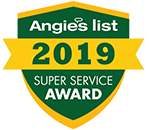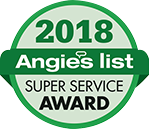You can think of the plumbing fixtures of your home as a sort of network. In fact, they’re actually all connected to the most important piece of gear in the entire home: the primary sewer line, often simply referred to as the “main sewer line” of a house.
Causes to Main Sewer Clogs
The main sewer line can indeed experience some wear over time. There are various reasons as to why this may happen. The pipes in the sewer might be damaged, whichever pipes are broken or ruptured will cause tremendous suffering. There are many reasons to pipe damage, including shifts in the soil, as well as above-ground activity, such as excessive traffic, or even interference with heavy construction equipment. Pipes can also corrode over time, which may lead them to collapse and even leak.
One of the most annoying things about issues with sewer lines is that they are almost always outside of the direct control of the homeowner because there are so many other external factors at play. Besides the issues that we’ve mentioned earlier, there are so many other things that could randomly happen. For example, a tree could grow its roots through the pipes (especially older ones, build with a porous material, such as clay). Tree and shrub roots are naturally attracted to water sources, as you might know. For this reason, they might infiltrate a sewer pipe in an effort to get to the water inside.
Although there are many things you cannot control, as previously explained, there are many positive and useful things you can do daily. For instance, you should consider the do’s and don’ts that might help you increase the lifespan of your plumbing system.
Don’t Pour Grease
If possible, don’t pour grease down the drain, because it causes build-up eventually causing clogging. Running hot water when pouring grease is a popular housewife tale, which is supposedly a solution to wash away the grease, but it does not work at all.
Don’t Flush Trash in Toilet
In addition to that, you should also be mindful of what you flush down your toilet. Your toilet bowl should not serve as a trashcan, because it will cause problems with your drain. To keep it safe, don’t flush anything other than human waste and toilet paper.
Signs to Look For
How can you tell if you have a problem with your sewer line? Well, there are many clear warning signs. For example, you might experience clogging in multiple fixtures, as well as frequent backups in your drain system. These are usually well-known indicators that you might be facing a sewer line issues. If you suspect this to be the case, you should consult a professional and take action immediately. By fixing the issue in time you prevent the problem from becoming even more annoying and potentially damaging.
When it comes to replacing or repairing, there is a wide range of options available at your fingertips. Many professional plumbers usually have specialized camera rigs. Camera rigs enable to see exactly what the problem is, so they can come up with the best, most cost-effective solution in any given scenario. Sewer lines can be repaired, by digging up around the line to comfortably access and work on the affected area. If the damage seems far too severe for a common repair, it might be worth considering a complete replacement instead.


















